The Sporting Rifle Match (or I’ve Met My Match and I Suck)
When I left off at the end of Part 5 after bagging the Great White Buffalo, you’ll remember that I was hanging out in the cabin at The Whittington Center and two guys had walked into the cabin. They looked to be in their late 20’s or early 30’s and were both named Dave, so the names were easy for me to remember. They were getting a late supper, on the grill outside the cabin. While they prepared their food and began eating it, we talked about where we were from and how we came to be here and gun stuff. I told them about Boomershoot and my wanting to come here and take a shot at the Great White Buffalo. They asked what firearms I had with me and after I mentioned a few, one Dave suggested that I should join them in a match they were participating in the next day. I asked what the match was and what the course of fire was.
Dave #1 explained that it was called a “Sporting Rifle Match’, a 60 shot match that takes place on the other side of the mountain from the shooting ranges. It is still on Whittington property located inside the perimeter fencing. There is a 2 mile long walking trail along which there are 10 stages, all in natural terrain. The participants are divided into squads of 5 or 6 depending on number of entrants. Using a shotgun start, each squad goes to their first stage and then proceeds to shoot at 6 targets that are placed anywhere from 175 yd. out to 875 yd. away. Each participant carries their rifle, a pack with their ammo, binoculars, water, and anything else such as energy bars, ballistic data cards, etc. No wheeled carts or spotting scopes allowed.
As a squad arrives at a stage, everyone uses their binoculars to scan the field of view from the shooting position and locate the 6 targets in that stage. Once everyone is comfortable with knowing where each of the targets are, each person takes his turn getting on the ground with their rifle and shooting for score. Once the person is down and the rifle’s touched the ground, another squad member acting as the time keeper, starts a stop watch. The shooter has 4 minutes to complete all 6 targets, one shot at each, hit or miss. 4 minutes sounds like a reasonable amount of time, but it averages out to 40 seconds per target. You have to remember about where the target was located in the field of view from your initial scan with the binoculars and then acquire it in your rifle scope, check your ballistic data card (or whatever you have such data stored on), set the elevation setting on your scope for the distance to that target, gauge the wind with no wind flags or man-made assistance, rack a round in the chamber and proceed to fire. Believe me, those 40 seconds go by in a hurry.
Now there is one facet of this process where the participants get a little help. You don’t have to use your scope as a rangefinder. Each squad is given a “map†with each of the ten stages portrayed in a square representing the field of view for the stage. There are six numbers shown on the stage square roughly representing about where each target is located. Each number is the distance to that target. For example, a stage square might show the number “175†in the lower left of the square and then a “230 further out and slightly more left, then a “360†in the middle distance area across the stage on the right side, a “390†back on the left, a “595†back near right-of-center and an “865†at the very top left of center. Each stage has its targets haphazardly placed.
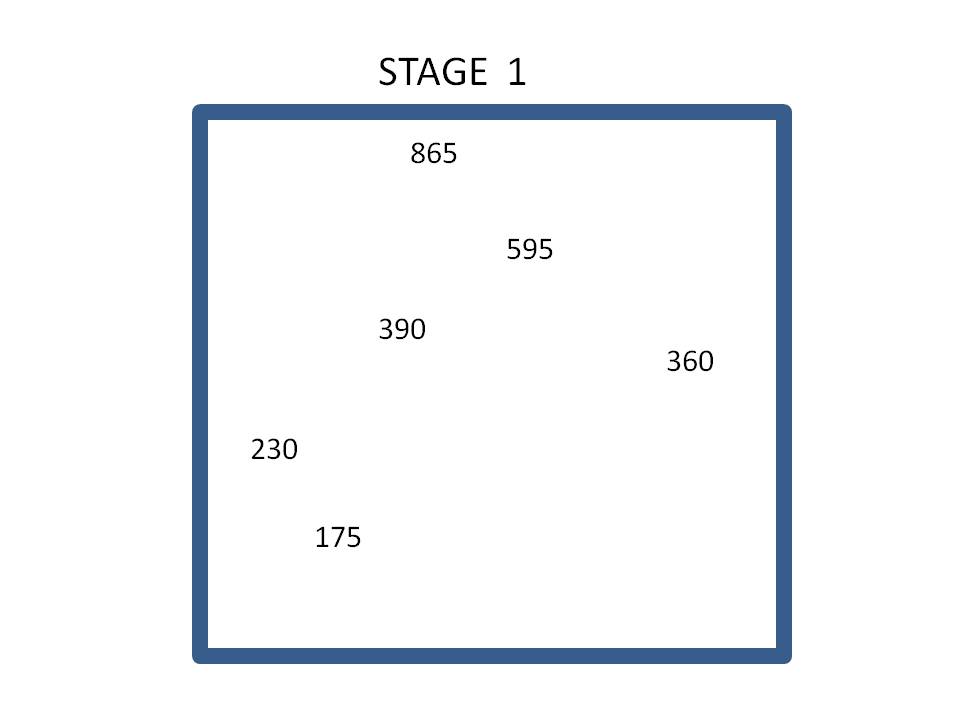 photo by Dave RNS Photographer ©
photo by Dave RNS Photographer ©
There’s no pattern between stages other than they cover distances from front to rear of the stage. The squad members use this distance mapping to help in the initial locating of the targets when arriving at a stage. They huddle together looking at the map and making sure everyone sees all 6 targets for that stage.
When a shooter’s on the clock, another member holding the scoring sheets and map page calls out the distance for whichever target the shooter is trying for next. All shooters don’t necessarily take the targets in the same order. Each shooter will call out which target he wants to go for next and the person manning the “map†will call out the distance for him. The other squad members view the target through their binoculars and call the shot as a hit or miss and if a miss, call out to the shooter how much of a miss and which direction. Everyone is very supportive and no one tries to purposely give misinformation.
The match starts at 7:00 AM with registration, a shooters’ meeting going over safety rules and the course of fire and any other announcements, such as similar matches upcoming somewhere else. Folks are divided into 10 squads, maps and scoring sheets are distributed to each squad and then the squads are sent out on a ‘shotgun’ start with a squad on each of the ten stages for their first round.
Alright, so here we go. What I didn’t mention before was just how unplanned this activity was and how unprepared I was. All I had was a rifle and 56 rounds of Black Hills .308 175 g. match ammo. I was curious and said I would go along with them in the morning. Dave #1 was nice enough to lend me 4 rounds of his hand-loaded ammo which he claimed was similar to my Black Hills in ballistics behavior. I didn’t have a back pack. No problem, Dave #2 loaned me an extra he’d brought along. I did have binoculars and a water bottle. Dave#2 also gave me some energy bars to eat during the day.
I had a bipod, but it was mounted on my 6.5×47 tube gun. The Remington was sans sling stud as I was using a shooting rest on a bench during this trip and had removed the sling stud to enable the fore end to move uninhibited in the rest’s top bag. I removed the stud from the tube gun and screwed it into the fore end of the Remington. The thread pitch was correct, but the length of the thread stud was not. I could only engage a little more than one thread into the stock. I snugged it up as tight as I thought reasonable short of damaging threads and mounted the bipod. Seemed ok at the time.
To add more fuel to the fire of unpreparedness, I had a scope mounted on my rifle that has no tick marks or gradations on the section of vertical reticle that lies above the horizontal:
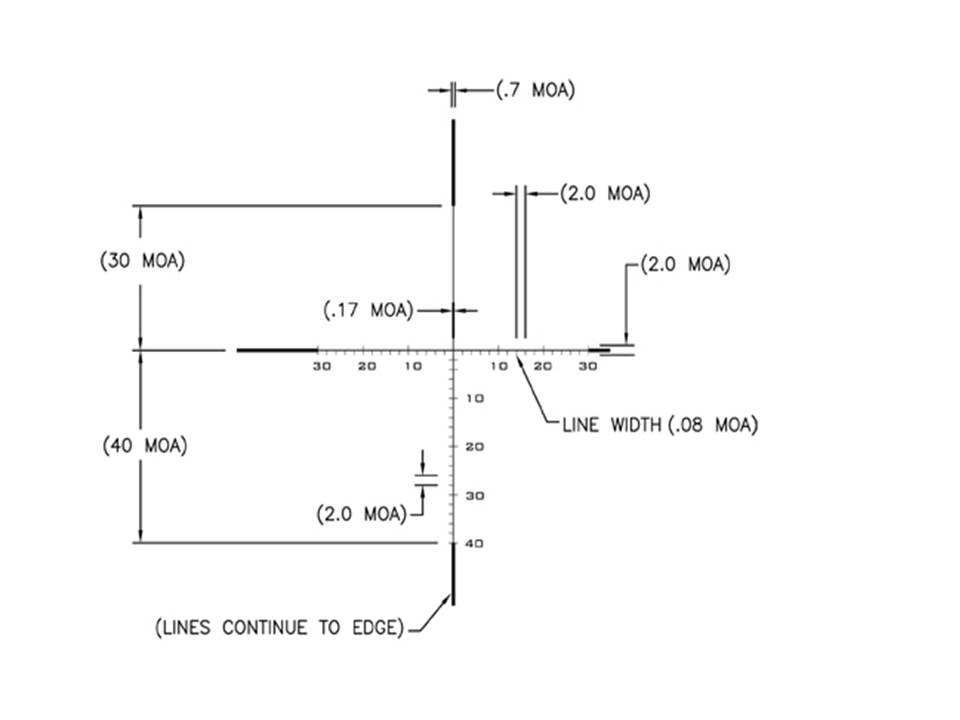 from U.S. Optics website
from U.S. Optics website
Combined with the base rail that has 20 MOA built in, I was in a situation where my bottomed out position on the elevation knob had a point of impact at approximately 475 yds. I would have to hold “under†on any target short of 475 yds. with no gradations, just a bare vertical line!
And to make things more interesting, I had no precise data card giving elevation knob settings at 10 yd. increments out to 1000 yds. I had my bottomed out “zero†at 475 yds. along with a small number of settings captured at various distances between 550 and 700 yds. from Boomershoot. But I had nowhere near the precise listing of elevation settings for every 5 or 10 yds. from 150 out to 1000. Dave #1 had a palm pilot ballistics program so we constructed a hastily written data sheet for my rifle using his data starting with a zero of 475 yds. and generated MOA numbers for other distances in 10 yd. increments. Luckily I was too naive to realize how far out of the water this fish was.
Things went from unknown to crappy right from the first shot on the first stage. As I squeezed off my very first shot, the bipod separated from the rifle and was obviously not going to stay attached with the too short stud screw. So, I was now going to shoot the remaining 59 shots of the match with the rifle supported on a back pack. I had no experience shooting off a back pack like this before and I discovered that I really sucked at it.
Using a shotgun start, our squad started on stage #5 which wasn’t a really long trek from the initial gathering area. This first position had us lying on a dirt road and other than losing the bipod and not hitting any targets, it didn’t seem so bad so far . . .
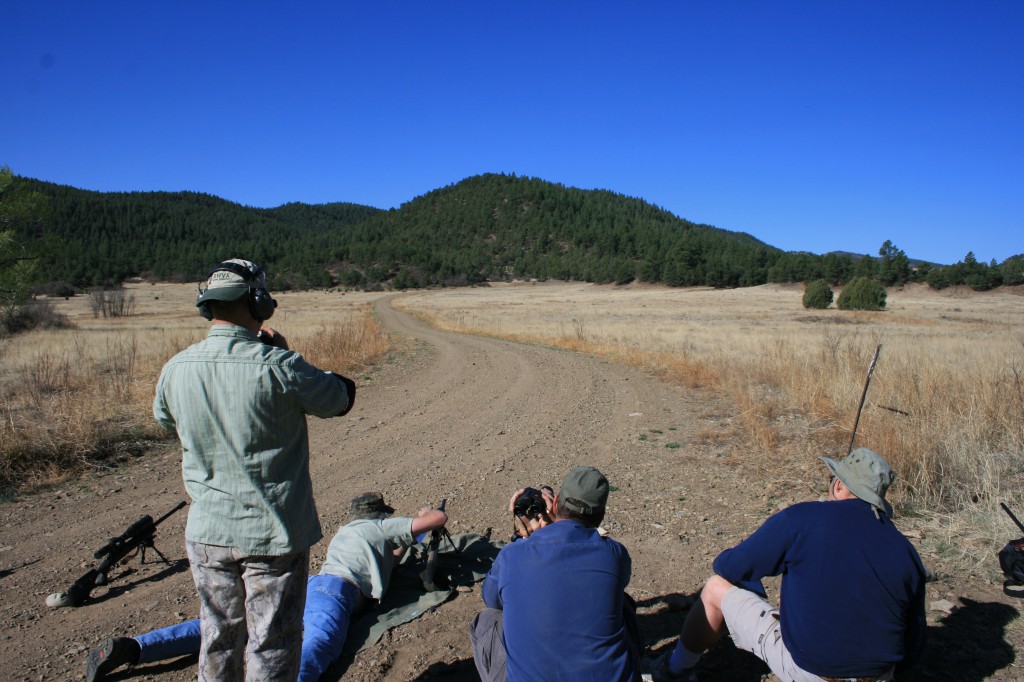 photo by Dave RNS Photographer ©
photo by Dave RNS Photographer ©
Just so you can get a feel for the course of fire, this next picture is the same but with red circles around the targets.
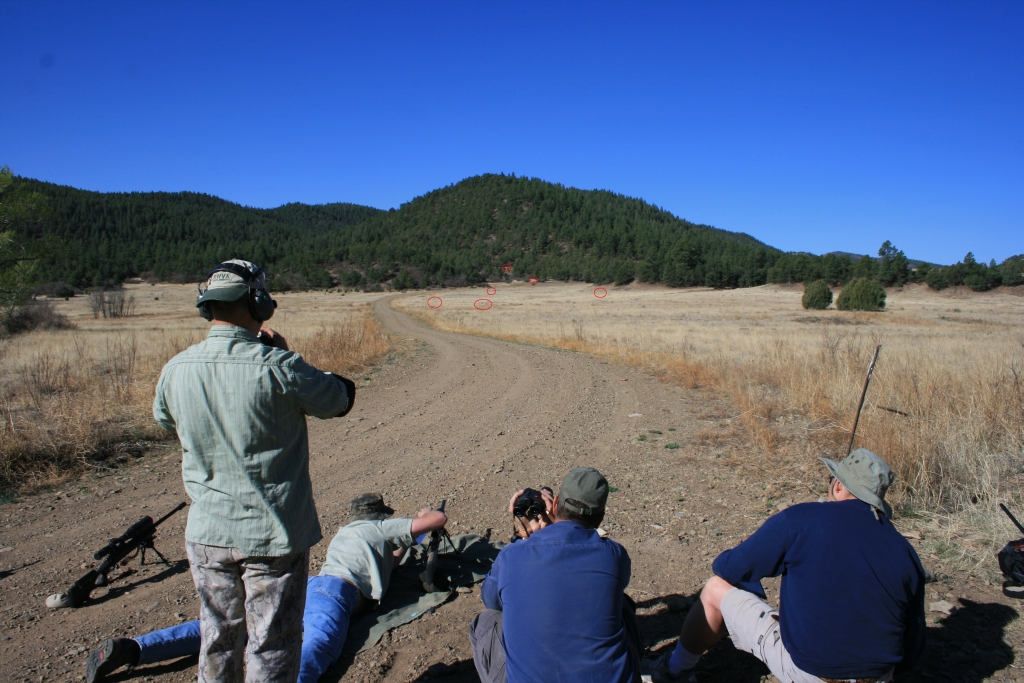 photo by Dave RNS Photographer ©
photo by Dave RNS Photographer ©
(a hearty thank you and tip of the hat to David Whitewolf for letting me place this picture and another one on his Flickr pages in order to allow the viewer to zoom in even closer to see the targets in better detail)
After everyone in the squad completed the stage course of fire, we picked up our gear and hoofed it to the next stage along the walking trail as the squad in the next picture is doing . . . .
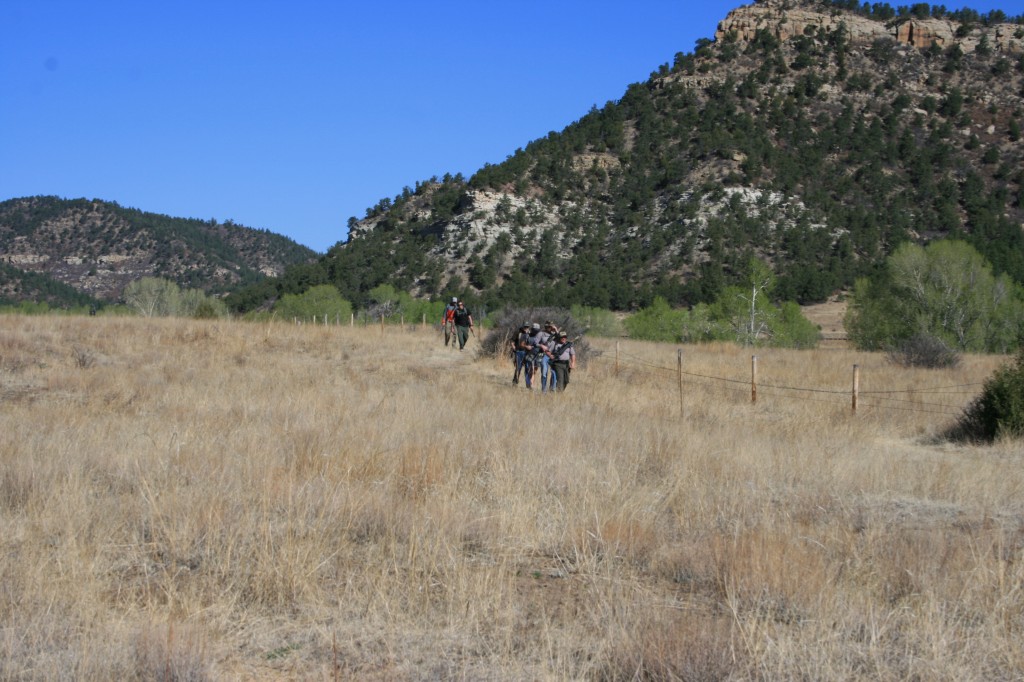 photo by Dave RNS Photographer ©
photo by Dave RNS Photographer ©
And so it went for the entire day, walking, setting gear down, acquiring targets, taking our turn shooting, getting up, picking up gear and hiking to the next stage and doing it all over again. The temperature increased as the day progressed and before long it was well over 80 in the steady New Mexico sun.
I should mention my attire. Never having been at the location of the match and not having much horse sense, I opted to wear some heavy rubber boots to go with my jeans and long sleeved heavy weight shirt over a T shirt. I thought I was warding off snake bites, sunburn and elbow abrasions. What I didn’t think about was heat stroke and most of all, altitude. You see, I’m a flatlander who resides at 920 ft. above sea level and here I was going to walk around carrying rifle and gear all day long at 6500 ft. Oh and as far as carrying the rifle, another piece of gear I did not have was a sling (not that it would do me any good without swivel studs). So I ended up carrying the rifle in one or both of my hands all day long and by the end of the day, I thought my arms would fall off. Man, what a marshmallow I am! The picture shows my fat ass shooting off one of the stages which happened to position the shooter on the backside of a berm (good).
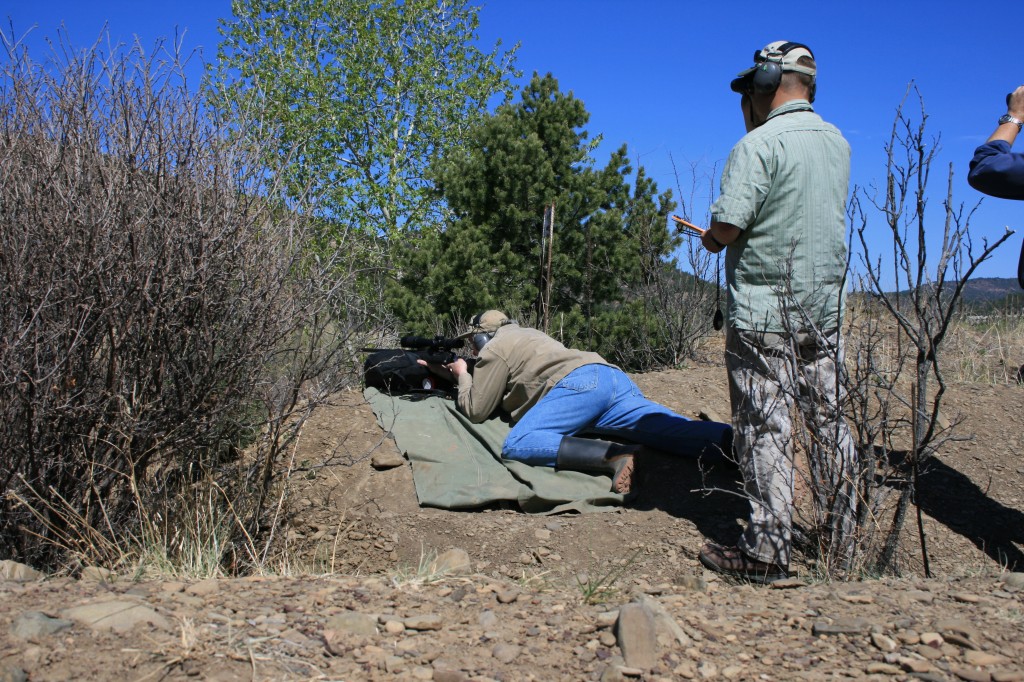 photo by Dave RNS Photographer ©
photo by Dave RNS Photographer ©
How about them boots? God were they hot and uncomfortable to walk in.
We also encountered shooting positions which placed the shooter on the downside of a berm (bad, very bad . . . resulted in cut forehead from scope due to shooter suffering from stupid).
The next 2 pictures show the field of view and targets at later stage:
Shooters’ view of the stage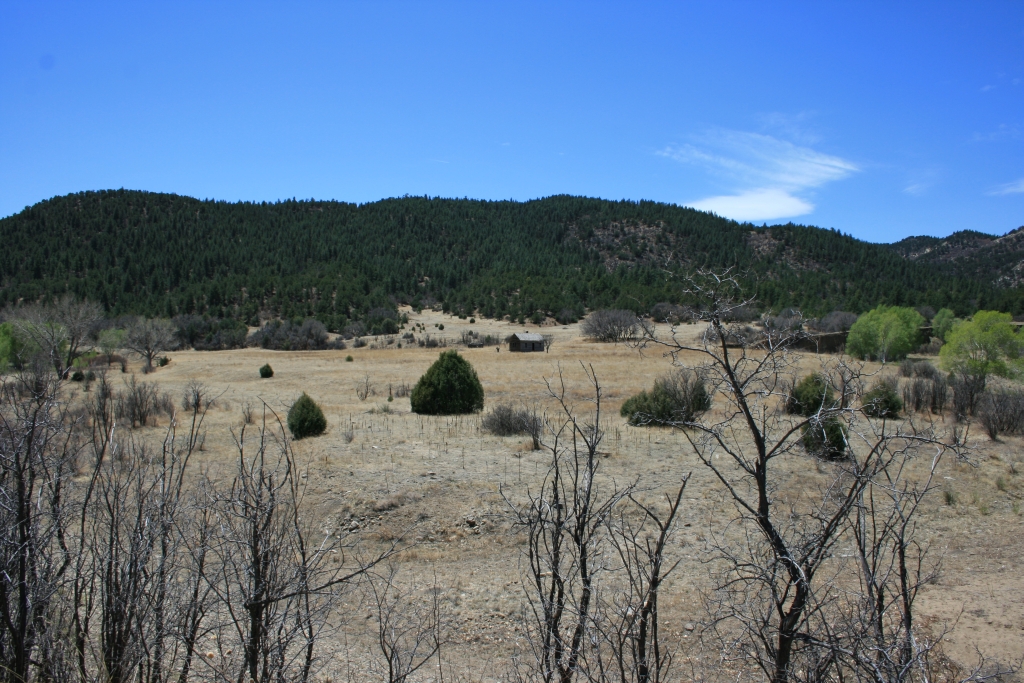 photo by Dave RNS Photographer ©
photo by Dave RNS Photographer ©
Shooters’ view zoomed in a bit with targets circled in red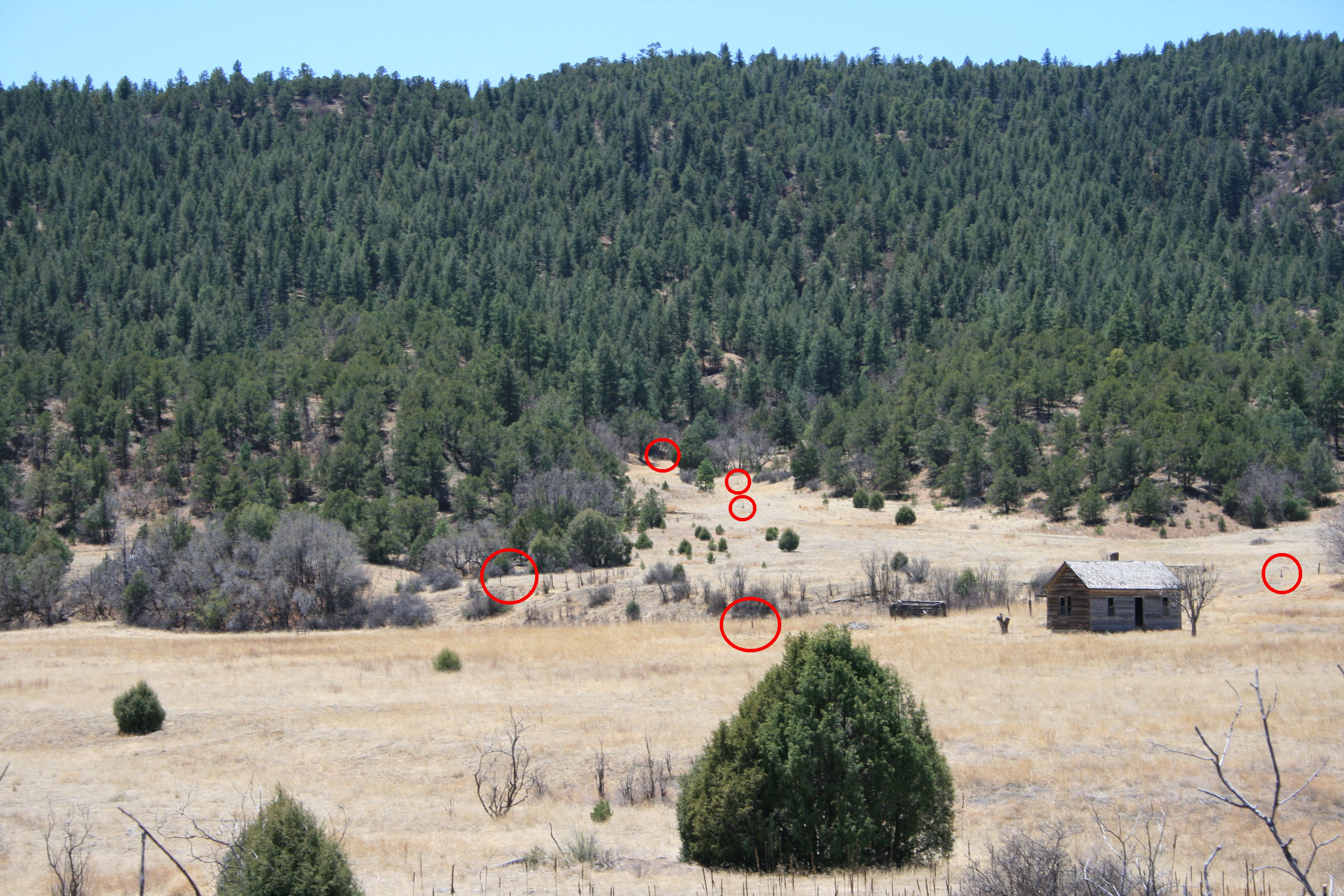 photo by Dave RNS Photographer ©
photo by Dave RNS Photographer ©
zoom in for even better detail
By the time we got to the 10th and final stage for the day, my heart wasn’t really in it. I could only find 5 of the 6 targets before the timer expired. I was totally gassed, dead tired, thirsty, and wasn’t even sure if I could make the walk back to my truck under my own power. I was gasping for air just leaning over to pick up the back pack. The only smidgeon of satisfaction was to have actually completed the course of fire on all of the 10 stages without quitting early. I did manage to do that and I’ll take it as something to build on. Dave #1 told me I did a good job and “persevered”. WTF else could he say?!! Certainly nothing positive about my shooting score. All I’ll admit to is that it wasn’t a no-hitter.
Wow, what an experience in firearms humility. I’ve never been so embarrassed at my lack of real- world shooting prowess and poor physical condition. On the other hand, I’ve never been so geeked to do it all over again next year. I hope the 2012 May match falls at the same time, one week after Boomershoot, so I can use the same travel itinerary and make it down to Raton to try my hand once more. I’ll keep watch on their web site for the 2012 match schedule and hope it works out. You can look at the web site at sportingriflematch.com.
[UPDATE:Â The 2012 schedule is posted on the website and the May match does fall on the Sunday following Boomershoot – May 6. I intend to be there.]
My competitive firearms experience consists of Black Powder Cartridge Rifle Silhouette where I use vintage 1870’s single shot rifles to knock iron animals off rails at 200 to 500 meters. I have also participated in a handful of club sponsored 100 yd. benchrest matches. Each of those competitions, though they are timed, allow for sighting shots. This Sporting Rifle match is a completely different animal. I have never been so impressed with a bunch of shooters as those I witnessed out in Raton last May. Many of the shooters were scoring above 40 and several were in the 50’s. Each match seems to have some fellows that score 56, 57 or 58 out of 60! This is all on natural terrain, no sighters, one shot hit or miss, no wind flags in a place where the wind blows quite a bit. These folks KNOW their rifles, their scopes, their ammo ballistics and how to read the wind. I stand in awe.
This was the sixth and last installment of my odyssey tale. The travels and adventure aren’t finished, only this particular sequence of episodes have passed. What I said at the beginning of part 1 about Boomershoot being at the root of all that followed is true. When I think back to 2004, sitting at my computer, I’d never have dreamt about the fun that was to follow.
Thank you Joe.
Previous Chapters:
Part 1 Hunting for Boomers
Part 2 Gunning for Prairie Rats
Part 3 My Introduction to .22 BR
Part 4 Tube Guns
Part 5 Shooting The Great White Buffalo

Dave,
Absolutely outstanding! I’m impressed by your willingness to take on a new shooting discipline you had never done before!
Great writeup, and now I’m even more fired up to go to Boomershoot again! I talked with Major Gene Econ last night, and we still have openings for the coached portion of the Precision Rifle Clinic, as well as Field Fire, though we also already have started to fill some slots.
Pingback: 2012 Boomershoot Prep – Part 2 | Random Nuclear Strikes
Pingback: Nightforce Rocks! | Random Nuclear Strikes
Pingback: The Firearm Odyssey Continues . . . After Action Report (sort of) | Random Nuclear Strikes